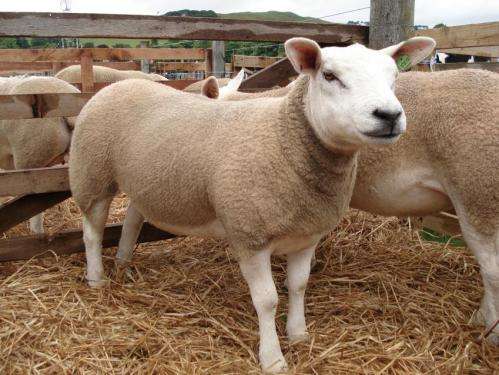The Sheep Genome: Study shows how sheep first separated from goats

Scientists have cracked the genetic code of sheep to reveal how they became a distinct species from goats around four million years ago. The study is the first to pinpoint the genetic differences that make sheep different from other animals. The findings could aid the development of DNA testing to speed-up selective breeding programmes, helping farmers to improve their stocks.
The latest study, led by scientists from Kunming Institute of Zoology, Chinese Academy of Sciences, BGI and other institutes, presents a high-quality sheep genome and reveals genomic and transcriptomic events that may be associated with rumen evolution and lipid metabolism that have relevance to both diet and wool. The work was published online today in Science.
Sheep are ruminants with a complex, 4-compartmented "stomach", the largest compartment is the rumen, which is thought to have evolved around 35-40 million years ago, and has the ability of converting the ligno-cellulose rich plant materials into animal protein. Wool is the most economic feature of the sheep, while the synthesis of wool is supposed to be linked to fatty acid metabolism. The genome data yielded in this study will lead to a better understanding of all those unusual evolution traits of sheep.
In this study, researchers assembled the sheep reference genome from two Texel individuals, and conducted RNA-Seq on 94 tissue samples (from 40 tissues), including 83 from four additional Texel individuals. The sheep assembly is around 2.61 Gb, with ~99% anchored onto the 26 autosomes and the X chromosome. They found many segmental duplications in sheep genome, and compared the sequences of sheep, goat, cattle, yak, pig, camel, horse, dog, mouse, opossum and human proteins and identified 4,850 single-copy orthologous genes from which they constructed a phylogenetic tree.
The gene-encoding proteins involved in keratinized epidermal structure development are relevant to the formation of the rumen, skin and wool. According to this study, researchers designated a non-annotated gene, Trichohyalin-like 2 (TCHHL2), and suggested it is specific to mammals. The role of TCHHL2 in sheep would be in cross-linking the keratins at the rumen surface. Besides, PRD-SPRRII family genes seemed to be the ruminant specific genes, which may be the result of the amplification and sequence divergence of SPRR2 gene. The function of PRD-SPRRII family proteins may be modified during the rumen evolution, and now have function in the cornification of the keratin-rich surface of the rumen.
To investigate the development of sheep's wool, researchers found a previously unrecognized gene representing subfamily of the late cornified envelope (LCE) genes, and named it LCE7A. LCE7A is expressed in skin of sheep, cattle and goat, but not in the rumen, and under positive selection in sheep. The researchers thought the expansion of LCE7A was associated with the wool formation.
Furthermore, researchers assumed that the MOGAT pathway in sheep skin may facilitate wool production. They found that the two genes- MOGAT2 and MOGAT3- undergone tandem gene expansions, were both expressed in sheep skin, not in liver. However, in humans, MOGAT3 is an important liver enzyme-encoding gene. They suggested the loss of MOGAT2 and MOGAT3 in liver may reduce the importance of liver in long chain fatty acid metabolism in ruminants compared to non-ruminants.
Min Xie, Project Manager from BGI, said, "Sheep is an important livestock with great economical value to provide people with meat, milk and fine wools. The availability of sheep genome provides us an opportunity to investigate the genetic basis of the rumen evolution and lipid metabolism in sheep skin. Based upon the genomic data in this study, more and more sheep-related studies could be conducted for expanding our understanding on this livestock. It also facilitates the maker-assisted selection for high-quality traits such as wool, meat, milk, among others."
More information: "The sheep genome illuminates biology of the rumen and lipid metabolism," by Y. Jiang et al. Science, 2014. www.sciencemag.org/lookup/doi/ … 1126/science.1252806
Journal information: Science
Provided by BGI Shenzhen



















